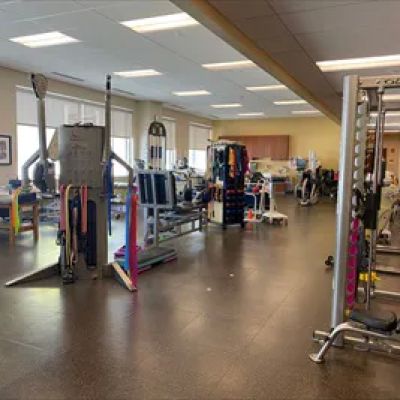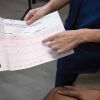How to Recognize an Irregular Heartbeat at Home
Heart health is one of the most vital aspects of overall wellness, and learning how to recognize an irregular heartbeat at home can make a life-saving difference. Many people experience occasional heart rhythm changes without realizing they may signal a condition known as arrhythmia — an irregular or abnormal heartbeat. Fortunately, with awareness, attention to symptoms, and a few simple monitoring techniques, you can detect potential problems early and take action before they become serious. This guide breaks down the signs, methods, and lifestyle adjustments that can help you stay in tune with your heart, along with advice from experts at HeartCare Hub.
1. Understanding What an Irregular Heartbeat Is
An irregular heartbeat, or arrhythmia, occurs when the electrical impulses that control your heart rate don’t function properly. This can cause your heart to beat too quickly (tachycardia), too slowly (bradycardia), or with an inconsistent rhythm. Some people describe it as a “fluttering” or “skipping” sensation in the chest, while others may feel lightheaded, dizzy, or short of breath.
While occasional irregular beats are common and often harmless — for instance, after too much caffeine or during stress — persistent or frequent episodes can be a warning sign of an underlying heart condition. Recognizing the difference between a temporary fluctuation and a chronic issue is crucial for early diagnosis and treatment.
2. Common Signs of an Irregular Heartbeat
Many arrhythmias can be silent, showing few or no symptoms. However, paying attention to subtle changes can reveal early warning signs. Common symptoms to watch for include:
- A pounding, fluttering, or racing heartbeat
- Skipped or extra beats that feel unusual
- Dizziness or feeling faint
- Shortness of breath, especially during mild activity
- Chest discomfort or mild pressure
- Fatigue without clear cause
These symptoms may appear sporadically or persist over time. If you notice them frequently, especially in combination, it’s time to consult a professional at HeartCare Hub to ensure proper evaluation and care.
3. Simple Ways to Check Your Heart Rhythm at Home
Learning how to recognize an irregular heartbeat at home doesn’t require expensive equipment. With patience and attention, you can start by monitoring your own pulse. Here’s how to do it effectively:
Step 1: Find Your Pulse
Use the tips of your index and middle fingers to locate your pulse either at your wrist (radial artery) or neck (carotid artery). Avoid using your thumb, as it has its own pulse.
Step 2: Count the Beats
Once you locate the pulse, count the beats for 30 seconds and multiply by two to determine your heart rate per minute. A normal resting heart rate for adults ranges from 60 to 100 beats per minute. Pay attention to whether the rhythm feels steady or irregular.
Step 3: Observe Any Irregularities
If you notice that the beats seem uneven, pause or occur in quick bursts, this could indicate an irregular pattern. Keep a journal of your observations, including the time of day and any accompanying symptoms such as dizziness or fatigue. This information is valuable for your doctor.
4. Modern Tools to Help You Detect an Irregular Heartbeat
Thanks to advancements in health technology, recognizing irregular heartbeats at home has never been easier. Devices like smartwatches, fitness trackers, and portable ECG monitors can detect changes in heart rhythm in real time. Some even alert users when abnormal patterns occur.
Popular devices such as Apple Watch, Fitbit, and KardiaMobile have FDA clearance for detecting signs of atrial fibrillation (AFib), one of the most common types of arrhythmia. While these tools are not substitutes for professional medical diagnosis, they can provide valuable data for early intervention. HeartCare Hub recommends using such technology alongside regular checkups to maintain optimal heart awareness.
5. Lifestyle Factors That Influence Heart Rhythm
Your lifestyle choices play a major role in maintaining a steady heart rhythm. Habits such as smoking, excessive caffeine intake, and chronic stress can trigger irregular heartbeats. Likewise, dehydration, poor sleep, and heavy alcohol consumption may also contribute. Small lifestyle changes can make a big difference:
- Eat a heart-healthy diet: Focus on foods rich in potassium, magnesium, and omega-3 fatty acids.
- Stay hydrated: Dehydration can lead to electrolyte imbalances that affect heart rhythm.
- Limit caffeine and alcohol: Both can overstimulate your heart and cause irregularities.
- Manage stress: Practices like yoga, meditation, and deep breathing help regulate your nervous system and support heart health.
Implementing these changes not only helps prevent irregular heartbeats but also improves overall cardiovascular wellness.
6. When to Seek Medical Attention
If you notice recurring episodes of irregular heartbeat, chest pain, or fainting, don’t ignore them. Even if symptoms seem minor, it’s best to have a medical professional evaluate your condition. Arrhythmias can sometimes be linked to serious health issues such as coronary artery disease or heart failure.
Doctors can perform tests like electrocardiograms (ECG), Holter monitoring, or echocardiograms to pinpoint the cause. At HeartCare Hub, specialists use advanced diagnostic tools to detect arrhythmias early and develop personalized treatment plans that suit your lifestyle and needs.
7. Real Stories: How Home Detection Saved Lives
Many people have discovered life-threatening conditions thanks to early detection of irregular heartbeats at home. One such case involved a 55-year-old man who noticed frequent heart flutters while using a smartwatch. After consulting his physician, he was diagnosed with atrial fibrillation — a condition that, if left untreated, could lead to a stroke. With timely intervention, his condition was managed successfully.
These stories highlight the importance of listening to your body and paying attention to irregularities. Whether through traditional pulse checks or modern wearable technology, awareness is the first step toward prevention and peace of mind.
8. Empowering Yourself with Knowledge and Care
Recognizing an irregular heartbeat at home is not about fear — it’s about empowerment. The more you understand your body’s signals, the better you can respond to potential health risks. Combining self-monitoring techniques with expert guidance from HeartCare Hub ensures that you’re not navigating heart health alone.
Your heart is your body’s engine — treat it with care, attention, and respect. With the right knowledge, tools, and lifestyle, you can take proactive steps to safeguard your heart and live a healthier, longer life.





















